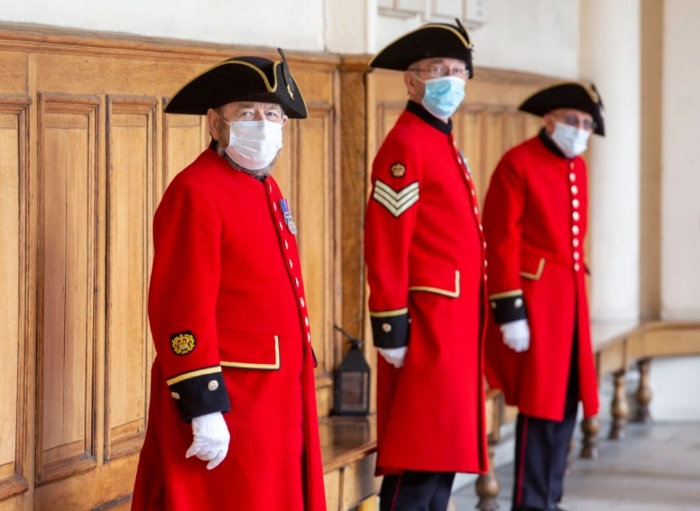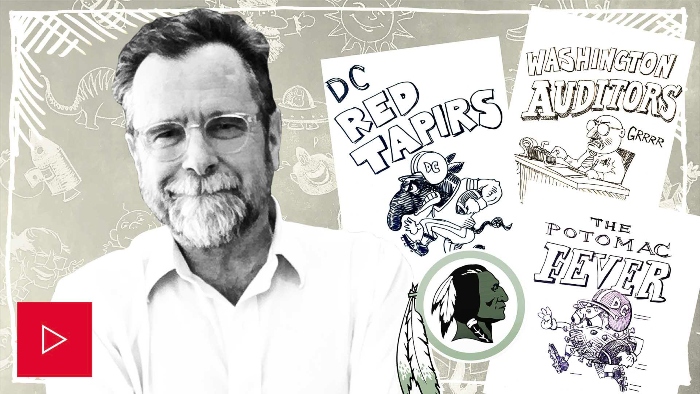
|
With help from Myah Ward
FEAR FACTOR — Today’s signs that Covid is far from being contained in the United States: Oklahoma Gov. Kevin Stitt tested positive for Covid; Walmart, the country’s largest retailer, is requiring masks in all its stores; and Maryland's second-largest school district said students won’t return to classrooms until 2021.
Just how scared should we be right now?
The virus isn’t going away — Halfway through July, the situation is actually worse in many parts of the country than at the start of the pandemic. Daily Covid deaths are at their highest levels in Alabama, Arizona, California, Florida, Texas and other states, according to the University of Washington’s Institute for Health Metrics and Evaluation. Last week, Covid Exit Strategy , a group tracking state progress in meeting Covid containment goals added a new shade, “bruised red,” to its color-coded map to signify states where Covid is spreading uncontrollably. Nearly 20 states are now colored deep red.
About 7 to 9 percent of the population, or 23 million people, have been infected to date, estimates Michael Osterholm, an infectious disease researcher at the University of Minnesota. He said transmission won’t slow until at least half of the population becomes infected. If cases continue growing at today’s pace, even with a lower death rate, he projects that about 800,000 people will die before any sort of herd immunity kicks in. Plus, he added, a shortage of crucial drugs like remdesivir and maxed out hospital capacity could start to reverse progress that clinicians make in treating Covid patients. And young people with common underlying health conditions like obesity aren’t immune from the worst effects of the virus.
“It’s like a big giant forest fire that’s looking for human lives to burn,” he said about the virus. “This is going to last for many months and it is going to get worse.”
We are still unprepared — Unlike other countries now comfortably opening businesses and schools, the U.S. wasted valuable time during its lockdown, said Amesh Adalja, a senior scholar at the Johns Hopkins Center for Health Security. The positive test rate is in double digits in many states, a sign that the virus is spreading faster than it can be controlled through testing and contact tracing. “What I am continually seeing in these states is that they keep making the same mistake in not being able to do the core elements of public health,” he said. The problem, in his view: Testing supplies are limited, test results are too slow to be useful in guiding behavior, there are still too few contact tracers and many states don’t have a handle on who is actually infected. Until state or federal officials can fix those problems, hotspots will continue to emerge around the country.
There’s some hope — Some states like Maine, Hawaii and Rhode Island have been able to contain the virus and its fallout.
We know what works, Osterholm said. Physical distancing, avoiding crowds and indoor spaces, and wearing masks all decrease risks of transmission to varying degrees. We also know to be less scared of socializing outside and of catching Covid from surfaces like doorknobs and delivery packages. Essential workers and others may not have the luxury of working from home. But keeping hospitals from overflowing can keep mortality rates lower.
“The message here is that none of us should be scared,” Osterholm said. For Father’s Day last month, he met his five grandchildren in person outdoors. He hugged them each for 30 seconds and gave them a kiss. “I felt that was an acceptable risk,” he said.
Welcome to POLITICO Nightly: Coronavirus Special Edition. I’m back! Thanks to Sabrina Rodriguez, Dan Goldberg, Alice Miranda Ollstein, Kevin Yamamura and the rest of the Nightly crew for filling in! What did I miss? Reach out rrayasam@politico.com or on Twitter at @renurayasam.
A message from PhRMA:
America’s biopharmaceutical companies are sharing their knowledge and resources more than ever before to speed up the development of new medicines to fight COVID-19. They’re working with doctors and hospitals on over 1,100 clinical trials. Because science is how we get back to normal. More.
| FIRST IN NIGHTLY |
THE TRUMP TEST — In the middle of a pandemic and an economic crisis, the White House has an urgent question for its colleagues across the administration: Are you loyal enough to President Donald Trump?
The White House’s presidential personnel office is conducting one-on-one interviews with health officials and hundreds of other political appointees across federal agencies, an exercise some of the subjects have called “loyalty tests” to root out threats of leaks and other potentially subversive acts just months before the election, according to interviews with 15 current and former senior administration officials, write Dan Diamond, Daniel Lippman and Nancy Cook.
White House officials have said that the interviews are a necessary exercise to determine who would be willing to serve in a second term if President Donald Trump is reelected. But officials summoned for the interviews say the exercise is distracting from numerous policy priorities, like working to fight the pandemic, revitalizing the economy or overhauling regulations, and instead reflect the White House’s conviction that a “deep state” is working to undermine the president.
It’s “an exercise in ferreting out people who are perceived as not Trump enough,” said one person briefed on the meetings.
The re-interviewing exercise is being led by Johnny McEntee, a 30-year-old Trump aide dating back to the 2016 campaign who was installed earlier this year as chief of the White House personnel office, responsible for filling thousands of jobs across the federal agencies.
McEntee, a former body man for Trump, did not respond to a request for comment. A White House official who defended the process said it’s part of the personnel office’s preparations for a second term, including gauging the officials’ post-election plans.
JOIN TOMORROW - POLITICO 2020 ELECTION REPORTER ROUNDTABLE: The countdown to Election Day is on, and recent polls show President Trump trailing Joe Biden. Join POLITICO journalists Natasha Korecki, Gabby Orr and Zach Montellaro who will peel back the curtain on the Biden and Trump campaign strategies, discuss key policy platforms and describe how voters are responding. REGISTER HERE
| ON THE HILL |
ROUND FIVE — Senate Republicans plan to unveil their version of Congress’s latest coronavirus relief package next week, offering a roughly $1 trillion proposal that could hardly look more different than the Democrats’ $3 trillion plan.
The bill from Senate Majority Leader Mitch McConnell will mark the next salvo of a political battle that will determine which Americans will benefit from the next — and perhaps final — tranche of economic recovery bills. At stake: billions of dollars in jobless benefits, millions of evictions, the safety of thousands of school districts, and not to mention, the solvency of state governments, POLITICO’s Marianne LeVine, Heather Caygle and John Bresnahan explain.
Both sides say they have no choice but to reach a deal before Congress departs for its August recess. But it could be an ugly three weeks to get there: Republicans and Democrats are far apart on key issues, and McConnell and House Speaker Nancy Pelosi haven’t even begun private conversations about the fifth relief package.
There are also some divisions within the GOP, with McConnell and many conservatives eager to cap the price tag at $1 trillion, while others, like Trump ally Lindsey Graham, open to an even bigger package that could be expanded to include a payroll tax cut or infrastructure spending.
One Senate Republican aide seemed stunned that Republicans appeared resistant to more coronavirus relief spending on the eve of an election where the majority is clearly in jeopardy: “It’s like they’re offering us cake, but we say, ‘No, we want the broccoli.’”
| FROM THE HEALTH DESK |
SHOT, CHASER — The global vaccine race has shifted into the equivalent of the Tour de France’s mountain stage, as more than two dozen candidates in clinical trials aim to put on the yellow jersey by advancing into the lead.
Results from those studies are starting to trickle out — and it can be hard for the average news junkie to distinguish hype from hope, writes deputy health care editor Lauren Morello, our resident vaccine expert.
Take Tuesday’s news from biotech company Moderna. Its vaccine produced an immune response in all but two of the 45 volunteers in a Phase I safety trial. Those results, published in the New England Journal of Medicine, sent the company’s stock, and the rest of the markets, soaring today.
But don’t get too excited just yet: The findings — while promising — don’t prove that Moderna’s vaccine can protect people against infection. Scientists still don’t know what level of antibodies are needed to ward off Covid-19. And Moderna’s initial study was very small.
To figure out whether its vaccine works, the company plans to enroll 30,000 people across the country in a massive clinical trial beginning in late July. Half of the participants will get the vaccine, given as two doses a month apart, and the other half will receive a placebo. By examining how many people in each group get infected with the virus over the following months, scientists will be able to tell whether the vaccine works.
The fastest vaccine ever developed, for mumps, took four years. Many candidates fail in clinical trials — even some in the final phase. And the Food and Drug Administration has never approved a vaccine made with the technology that Moderna is using.
What we’ll be watching: The results of Moderna’s Phase III trial won’t be out for months. But on Monday the Lancet will publish the first clinical data on another frontrunner in the vaccine race — a shot developed by Oxford University and AstraZeneca. That vaccine is already in large, end-stage trials in Brazil, South Africa and the United Kingdom, and there are plans to launch a study in the U.S. as well.
Here’s a cheat sheet to the testing process.
The first step is usually giving the vaccine to animals such as mice, ferrets or monkeys to demonstrate that is safe. Scientists also want to see if the shot provokes an immune response. If a vaccine doesn’t work in animals, it probably won’t work in people.
Phase I trials test the vaccine on small numbers of people, looking at whether it’s safe and tracking the immune response at different doses.
Phase II trials are larger and usually test the vaccine on different groups of people, including kids and the elderly. These studies provide more detailed information on a vaccine’s safety and effectiveness.
Phase III trials, the final step, normally enroll thousands of people. Scientists give some participants the vaccine and some a placebo, and track how many get infected. Success in this last stage normally means a vaccine is headed for approval.
A coronavirus vaccine can't come too soon, so regulators in the U.S. and elsewhere are allowing some vaccine makers to combine multiple phases in a single trial. Companies are also advancing stages before the data from their earlier work is public. The Oxford/AstraZeneca team began enrolling participants in a joint Phase II/III trial in late May, even though they’re only publishing Phase I results now, in July.
THE POLICY BEHIND THE NURSING HOME PROBLEM — The nursing home industry has been pushing for looser regulations for years. And they got what they wanted at the start of the pandemic. But now, advocates say lax standards are fueling the virus’ spread. Maggie Severns has the story in the latest POLITICO Dispatch.
| PUNCHLINES |
A NEW NAME IN D.C. — After a call out on Instagram and Twitter for followers to submit ideas for the new Washington football team mascot, Matt Wuerker lists the funniest submissions and sketched out his favorite, in the latest edition of Punchlines.
| AROUND THE NATION |
SCHOOL DAZE — Nightly’s Myah Ward chatted over Slack with California education reporter Mackenzie Mays and national education reporter Nicole Gaudiano about what to expect as districts across the U.S. announce that their students will be virtual this fall, while others say their schools will be fully open next month. This conversation has been edited.
How is this discussion unfolding across the U.S.?
NG: Florida has ordered schools to reopen for at least five days per week and South Carolina's governor is pushing that option. But a majority of voters nationwide — 53 percent — oppose fully opening day cares and K-12 schools with in-person instruction in the fall, according to our latest POLITICO/Morning Consult poll. Even more voters, 65 percent, reject the Trump administration’s threat to cut federal funding for schools that don't reopen.
Speaking of Trump — there’s a lot of pressure from the administration to open schools. Will it work?
NG: It seems the pressure campaign is being disregarded, at least by large districts. Most education spending is overseen at the state and district level, and the administration would need approval from Congress to carry out their threats of withholding funding.
MM: I guess where his threats have the power is in states where Republican governors will feel pressured to reopen. But then you have to ask: What power do governors have re: schools in their states even?
Is there a state or district that seems to have a handle on this?
NG: Well, the administration points to Florida. They like the order to reopen for at least five days. But it’s unclear whether some districts will have the ability to do that, given the skyrocketing number of cases.
What else is on your mind as this unfolds?
NG: Many schools are dealing with similar issues: Many are overcrowded already, so how do you social distance? There are resource inequities, which could complicate distance learning. They may want to do health checks, but there's a school nurse shortage. It’s just a complicated, devastating situation across the country.
MM: One question I'm fascinated by is: What if teachers refuse to go? We have a lot of older teachers; we have teachers with underlying conditions. And teachers unions are incredibly powerful. I wonder how it will play out if district leaders and teachers are not on the same page.
Spoiler alert: I think teachers have the power.
| ASK THE AUDIENCE |
Nightly ask you: Do you support more or fewer pandemic restrictions in your area? Which ones do you think are most important or least necessary? Let us know your thoughts in our form, and we’ll include select answers in Friday’s edition.
Are you a health care worker? As the pandemic worsens in some regions and stabilizes in others, POLITICO is continuing to track the ability of hospitals, nursing homes and other care providers to manage the crisis — and also how the pandemic is affecting workers on the frontline. Tell us about your experiences and your facility’s response, and share this survey with any colleagues who may be interested.
HAPPENING TOMORROW AT 9 a.m. EDT – REBOOTING THE AMERICAN WORKFORCE : Join POLITICO for a virtual discussion exploring how recovery efforts have affected different sectors of the American workforce and what measures lawmakers need to implement to help Americans get back to work. Featuring a keynote conversation with Rep. Bobby Scott (D-Va.), the chairman of the House Committee on Education and Labor, the program also includes a panel discussion with Neil Bradley, executive vice president and chief policy officer at the U.S. Chamber of Commerce, and Marianne Wanamaker, associate professor of economics at the University of Tennessee and former chief domestic economist for President Donald Trump’s White House Council of Economic Advisors. REGISTER HERE.
| NIGHTLY NUMBER |
65 percent
The proportion of Walmart stores located in areas where there is already some form of government mandate on face coverings. Walmart announced today that it will require customers to wear face coverings at all of its namesake and Sam’s Club stores, making it the largest retailer to introduce such a policy.
|

Retirees are seen wearing protective face masks during a visit by Camilla, Duchess Of Cornwall, to the Royal Hospital Chelsea in London. | Getty Images
| PARTING WORDS |
NORTH OF THE WALL — Maura Forrest writes from Ottawa:
The Canada-U.S. border will stay closed until at least late August, and the vast majority of Canadians are quite happy about it. Canada has largely managed to control the pandemic, with about 109,000 cases of Covid-19 to date, while the U.S. has lately been recording about 60,000 new cases every day.
While Trump has been criticized for passing the U.S. pandemic response to governors, Canada's approach has been similar: It has allowed provinces and territories to take the lead on public health measures, including school and business closures and gathering limits. Prime Minister Justin Trudeau made clear from the start that he would invoke the federal Emergencies Act, which would allow Ottawa to take more control of the response, only as a last resort. He has instead been holding weekly conference calls with the country’s premiers. Most jurisdictions moved in lockstep during the early weeks of the pandemic to shut down large parts of the economy and have been cautious in reopening. In Ontario, Canada’s largest province, restaurants and bars will open for indoor service starting Friday.
For the most part, Canadians have not protested public health advice, and measures like mask-wearing have not been politicized in Canada as they have in the U.S. — though one recent poll showed Canadians are actually less likely than Americans to wear masks in public.
While many provinces have for weeks been reporting few new daily cases, growth has continued in Quebec and Ontario. That has been driven in part by serious outbreaks in long-term care homes, which account for roughly 80 percent of Covid-19-related deaths in Canada. Quebec is now asking bar-goers to get tested because of new outbreaks linked to Montreal bars, which opened in June.
A message from PhRMA:
America’s biopharmaceutical companies are sharing their knowledge and resources more than ever before to speed up the development of new medicines to fight COVID-19. They’re working with doctors and hospitals on over 1,100 clinical trials.
And there’s no slowing down. America’s biopharmaceutical companies will continue working day and night until they beat coronavirus. Because science is how we get back to normal.
See how biopharmaceutical companies are working together to get people what they need during this pandemic.
And there’s no slowing down. America’s biopharmaceutical companies will continue working day and night until they beat coronavirus. Because science is how we get back to normal.
See how biopharmaceutical companies are working together to get people what they need during this pandemic.
Did someone forward this email to you? Sign up here.
Follow us on Twitter
Renuka Rayasam @renurayasam
|
FOLLOW US
|




No comments:
Post a Comment
Note: Only a member of this blog may post a comment.